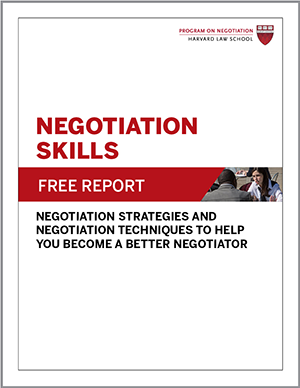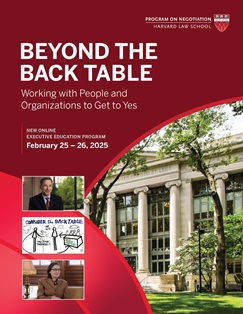Astronomers consider Mauna Kea, a dormant volcano that rises more than two miles above the Pacific Ocean on the island of Hawaii, to be the premier site in the world for viewing the night sky. Due to the volcano’s high altitude and tranquil, dark nights, NASA and groups of scientists from around the globe began planting mega-telescopes on its bald, pristine terrain
in the 1970s.
In the shadow of the telescopes, Hawaiians bring offerings to Mauna Kea’s ancient burial sites. Some say that, surrounded by the stars, they feel closer to their ancestors there. Many Hawaiians view the gigantic telescopes as eyesores—and, worse, as a violation of their sacred land.
In 1999, U.S., Canadian, Indian, and Japanese astronomers began planning a mammoth $1.4 billion, 18-story telescope they hoped to build on Mauna Kea. Expected to provide new glimpses of the universe, it would be the largest telescope in the Northern Hemisphere and the biggest building on the island of Hawaii. Expecting objections from locals, the astronomers took steps to address them. First, they decided to position the so-called Thirty Meter Telescope (TMT) on a plateau below Mauna Kea’s summit, rather than atop it. They also promised to pay up to $5 million annually to care for the mountain and to fund education, development, and astronomy projects in Hawaii, the New York Times reports.
But although many Hawaiians welcomed the Thirty Meter Telescope’s predicted economic and scientific benefits, others categorically refused to condone another huge telescope on their sacred land. In 2014, protestors disrupted the telescope’s groundbreaking ceremony and formed a blockade that halted construction. Later that year, the Hawaiian Supreme Court revoked the telescope’s building permit, saying the project had to win approval at a scheduled hearing first.
With the fate of the telescope uncertain, the astronomers have developed a backup plan, saying they will build it on the Canary Islands if their legal challenges in Hawaii fail.
As the Mauna Kea conflict illustrates, some of our most heated negotiations and disputes concern our core values, such as our personal moral standards, our religious and political beliefs, and our family’s welfare. Business partners sometimes clash over the ethical standards they expect each other to uphold. A negotiator may refuse to do business with a potential counterpart she deems unsavory on moral grounds. And parents might bar their teenager from attending an event they think might be dangerous. When our most deeply held beliefs and principles are at stake, we might ratchet up conflict out of a desire to be heard or categorically refuse to negotiate. Research shows that such so-called value conflicts, which highlight our norms, beliefs, and identities, are more difficult to resolve than resource conflicts—those in which parties are fighting over shares of limited resources. We may feel so strongly and deeply about our values that we often refuse to make any concession that would appear to compromise them. A targeted approach may be needed to resolve conflicts over values. Drawing on new research, we present four strategies for negotiating such conflicts.
1. Assess whether the value is truly sacred.
Conflicts over values often arise because one or more of the parties involved considers a value to be sacred and nonnegotiable. “One of the challenges that we have is that, when you use the word sacred, it means no discussion,” said Peter Apo, a trustee of the Office of Hawaiian Affairs, a state agency, in an interview with PBS NewsHour about the Thirty Meter Telescope dispute. “So, [the protestors] won’t come to the table to discuss anything, because there will be no compromise. The TMT will not be built. So that makes it a little bit difficult to talk about anything.”
In some cases, our values truly are sacred and not open to compromise. In other situations, however, our values turn out to be “pseudo-sacred”—that is, we are willing to negotiate them under certain conditions, notes Harvard Business School professor Max H. Bazerman. For example, in one study, negotiators with little power (namely, those with a weak BATNA, or best alternative to a negotiated agreement) were more likely to compromise on a seemingly sacred issue than negotiators with greater power, Notre Dame University professor Ann E. Tenbrunsel and her colleagues found in their research. A lack of alternatives led the low-power negotiators to become more flexible on the “sacred” issue.
Before refusing to budge on an issue you deem sacred, try to envision an outcome that would allow you to abide by the spirit of your values even as you make concessions on the specifics. Similarly, if a counterpart insists a particular issue is sacred, you might make a proposal that honors his values while also bringing you closer to agreement.
This doesn’t mean putting price tags on your most cherished beliefs; rather, it means thinking creatively about how to meet your broader goals. Imagine, for example, that you are adamantly opposed to your sibling’s desire to sell some of the possessions of your late parents that you cherish. But what if you donated some or all of your share of the proceeds from the sale to a charity that your parents supported? You might come to believe that this solution honors your parents’ values even more than keeping their belongings.
2. Highlight the most efficient solution.
Whether resources or values are at stake, experienced negotiators know that they can achieve better outcomes by making tradeoffs across issues than by simply haggling individually over every issue on the table. For example, suppose you represent a community group that is in conflict with a business over potential deforestation of two parcels of land that the business owns. Your group values Parcel A for its greater species diversity relative to Parcel B. Thus, you should be willing to make more concessions on Parcel B to protect a greater swath of Parcel A.
Surprisingly, though, in value conflicts, negotiators tend to reject such logrolling in favor of across-the-board concessions on all the issues at stake, Peter Lucas Stöckli (Military Academy at ETH Zurich) and Carmen Tanner (University of Zurich) found in their research. For example, you might prefer to make similar-sized cuts to both Parcel A and Parcel B than to sacrifice B to protect A. When one of our core values is at stake, we seem to be reluctant to engage in the kind of logrolling that would best advance our interests. We may find across-the-board cuts more satisfying because they don’t require us to make sacrifices across our values, Stöckli and Tanner theorize.
If your counterpart is resisting making tradeoffs across issues, this finding suggests, encourage her to see why such a deal would be more advantageous to her than similarly sized concessions across all issues. If she still resists the best objective outcome for her (and you), you might decide to accept a less efficient agreement in return for the potentially larger goals of ending the conflict and improving your relationship. And when we find ourselves resisting difficult tradeoffs, we need to consider whether we’re at risk of passing up the best solution for one that simply “feels” better.
3. Offer a concession on one of your core values.
You may also may be able to induce cooperation from a reluctant counterpart in a value conflict by making a difficult but symbolic concession on one of your own key principles or beliefs.
In a 2007 study, Jeremy Ginges of the New School for Social Research and his team presented various proposals for resolving the Palestinian-Israeli conflict to citizens residing in the West Bank and Gaza: Jewish-Israeli settlers, Palestinian refugees, and Palestinian student supporters of Hamas. All three groups soundly rejected proposals that would require their group to make a concession on a core issue (such as Israeli withdrawal from the regions or Palestinian forfeiture of the right of return to Israel) in exchange for peace. And when each side was also offered significant economic aid, they were repulsed by the idea of trading their sacred values for cash.
However, when asked whether they would accept the peace deal if it was accompanied by a significant concession from the opposing side on one of its sacred values, all three groups became willing to negotiate. The Israeli settlers agreed to make concessions if Hamas accepted Israel’s right to exist. The Palestinian refugees grew more flexible if Israelis would relinquish their claim to the West Bank. And the Palestinian students became ready to bargain if the Israelis were willing to officially apologize for Palestinian suffering in the conflict.
The results suggest why the protestors in Hawaii rejected the astronomers’ offer of significant funds to support local projects. When our most sacred values are at stake, we are likely to be offended by the suggestion that our support can be “bought.” By contrast, proposing a meaningful sacrifice on one of your own core values may demonstrate your seriousness and inspire reciprocation.
4. Affirm the other side’s positive qualities.
In a new study, researchers Fieke Harinck of Leiden University in the Netherlands and Daniel Druckman of George Mason University compared the effectiveness of particular interventions aimed at resolving both value conflicts and conflicts over resources. They paired off participants and had them attempt to negotiate a resolution to a resource conflict that either did or did not involve a core value.
Before negotiating, the participants were assigned to either a control condition or one of three intervention conditions. Those in the “other affirmation” condition were asked to list five positive qualities of their counterpart, such as an impression or a behavior they’d observed. Participants in the “shared identity” condition were asked to focus on traits they had in common with their counterpart. Participants in the “transaction costs” condition learned before negotiating that they would lose more money the longer they negotiated, thus creating a financial incentive to reach agreement quickly.
Which interventions worked best? For value conflicts, thinking about a counterpart’s positive qualities was most effective at maximizing the parties’ joint outcomes. Focusing on shared identity was marginally less effective than no intervention at all, and concentrating on transaction costs was least effective in value conflicts. Interestingly, affirming one’s counterpart was the least successful strategy in straightforward resource conflicts (those not involving a core value). Thus, in a value conflict, it may be wise to think about the qualities you appreciate in your counterpart, such as ingenuity, trustworthiness, deep convictions, or some other virtue.
This result dovetails with findings from University of California at Los Angeles professor Corinne Bendersky showing that negotiators may be able to soften their counterpart’s firm stance on a seemingly sacred value by making statements that affirm the counterpart’s status. In one of Bendersky’s experiments, participants who either strongly supported or opposed the Affordable Care Act (“Obamacare”) were told they were being paired with a counterpart with polar-opposite views on the act. When participants received messages from their counterpart that affirmed their status—for example, “I have a lot of respect for people like you who stand by their principles”—they were more generous toward the counterpart in a subsequent decision-making task. It seems that an opponent’s affirmation of our status buffers us against the identity threat we’d suffer if we compromised on a core issue and makes us more flexible in the process.
Knowing when to admit defeat
Because we tend to err on the side of refusing to negotiate when our core values are at stake, it’s important to approach conflicts over values analytically rather than simply relying on our emotions and intuition, writes Program on Negotiation chair Robert Mnookin in his book Bargaining with the Devil: When to Negotiate, When to Fight (Simon & Schuster, 2010). But at the end of that self- or other analysis, we need to recognize when a value truly is sacred, and no amount of creative thinking or framing will persuade you or your counterpart to budge. As in all types of negotiations, it’s important to develop a strong BATNA in value conflicts so that you will be ready to walk away and honor your own and others’ deepest principles and beliefs if the need arises.







